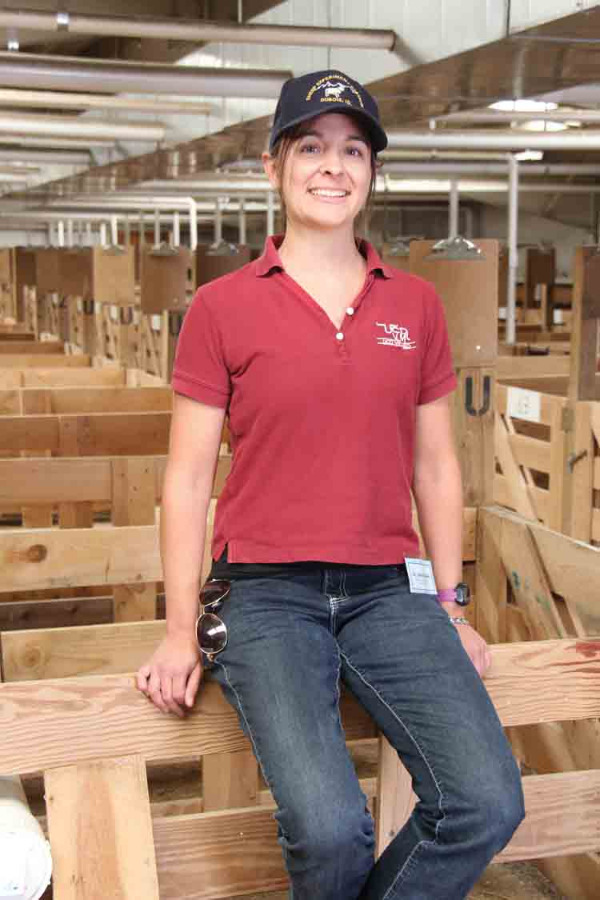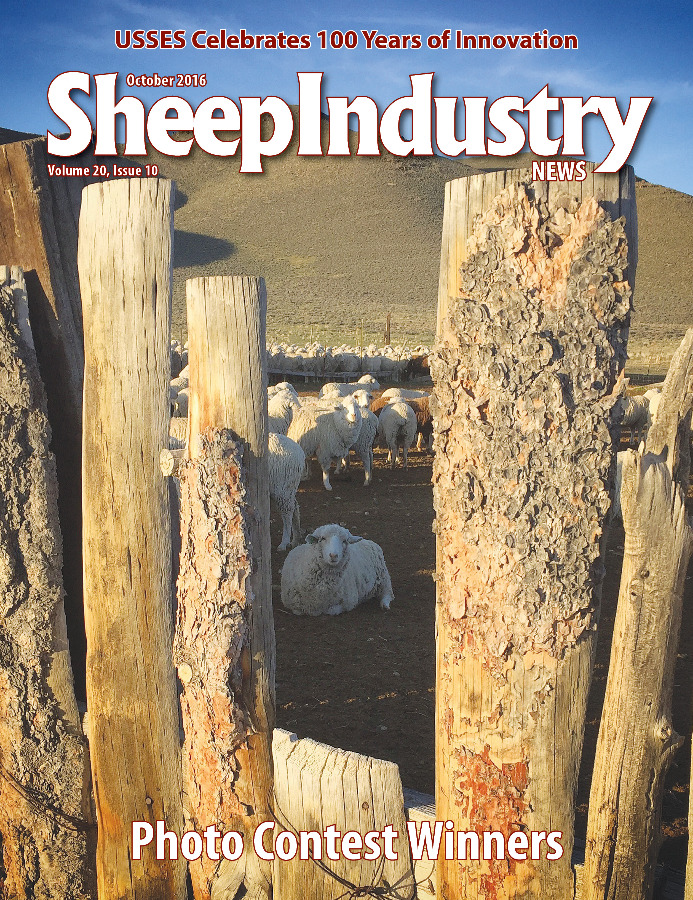The Last Word

USSES Provides Opportunity for Vet Students
Kyle Partain
Sheep Industry News Editor
This won’t come as a surprise to those who have dealt with the U.S. Sheep Experiment Station at any point in the last 100 years, but the thing that makes the place so special is the people who live and work there. Sure, the station’s location in eastern Idaho is perfect for the study of sheep and the rangeland they graze, but it would be just another collection of buildings and pastures without the people who call the station home.
 Jenni Dike, DVM, is one of those people – at least in the spring. She spends about eight weeks on site each year as the lambing vet, overseeing a group of fourth-year vet students who also assist with health-related issues during lambing. The roving veterinarian calls California home, but has resisted starting her own practice in an effort to maintain some flexibility in her professional life.
Jenni Dike, DVM, is one of those people – at least in the spring. She spends about eight weeks on site each year as the lambing vet, overseeing a group of fourth-year vet students who also assist with health-related issues during lambing. The roving veterinarian calls California home, but has resisted starting her own practice in an effort to maintain some flexibility in her professional life.
“I don’t really want that yet,” she said while attending the USSES 100th anniversary celebration. “I’m too young to settle down right now. I do a lot of relief services, which can keep me busy. But it also gives me some flexibility to move around and play a role in the sheep industry. Really, I don’t see many sheep except for when I’m here. I honestly don’t know all the ins and outs of the sheep industry, so this week has been a great opportunity to learn more about the issues.”
Nearly a decade ago, Jenni was one of those fourth-year vet students that she now supervises. She worked a two-week rotation at USSES in 2007, then returned as the lead vet in 2008.
“I was still pretty green at that point, but they took a chance on me and hired me anyway,” she says. “I came back again in 2009, then there was a pretty big break before I came back in 2015. During lambing, we are walking pens every day, looking for early signs of disease and treating the sheep for such. The best part for me now is that I get this great young crew of moldable minds that comes from all different sorts of backgrounds. Some of them might have never touched a sheep in their lives, while others are very well versed in sheep management.”
As the lead vet, Jenni is assigned a house on the USSES campus. Vet students bunk in the on-grounds dormitory.
“It’s about 1,000 steps from my house to the lambing barn,” Jenni says. “In 2008 and 2009, those were big snow years. I didn’t even know my house had a backyard because the snow drifts never melted while I was here. The last two years were a lot milder, but we can get just about any type of weather here in March, April and May.”
Jenni is certainly an advocate for both USSES and its internship program for aspiring veterinarians.
“The students always say their time here was one of the most educational parts of their fourth year of vet school,” she said. “We’re on call 24/7 and the students are always talking and learning. We work pretty closely with the barn crew here, and I’m liable to get calls at all hours of the night. But that’s the life of a veterinarian. That’s why the program here is such a good experience and such a great opportunity. It’s also a lot of hard work.”


